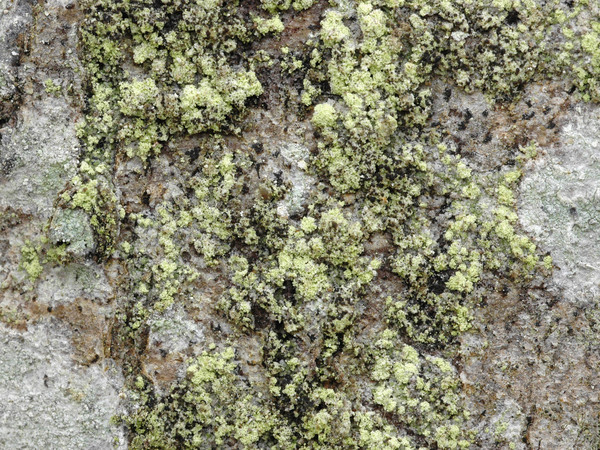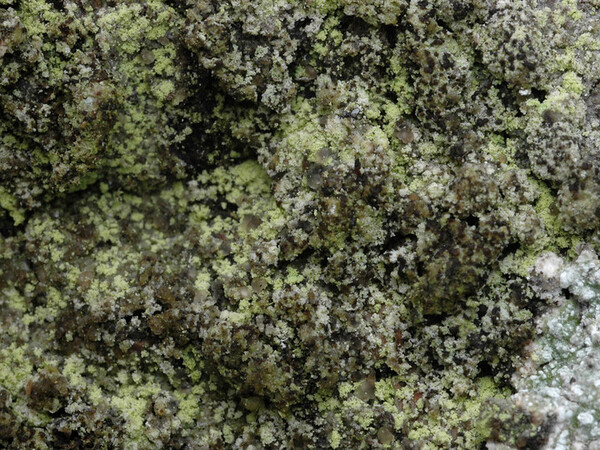Arthonia biatoricola Ihlen & Owe-Larss.
in Ihlen & al., Symb. Bot. Upsal., 34, 1: 107, 2004.
Synonyms: Bryostigma biatoricola (Ihlen & Owe-Larss.) S.Y. Kondr. & Hur
Distribution: N - TAA (UPS-L-166791: Brackel 2016).
Description: Thallus inapparent, not lichenized, developing on the thalli of Biatora efflorescens. Apothecia arthonioid, emarginate, dark brown to almost black, epruinose, slightly convex, irregularly rounded, 0.1-0.45 mm across, scattered or in groups of 2-6. Proper exciple very poorly developed; epithecium pale brown to brown, 4-12 μm high, K-, I+ rust-red, K/I+ blue; hymenium colourless, 20-55 μm high, I+ reddish brown, K/I+ blue; paraphysoids branched and anastomosing, 1-2 μm thick, the apical cells not markedly swollen; hypothecium pale brown to brown, 25-40 μm high in central part, the lower part immersed in the thallus of the host, K-, I+ reddish brown. Asci 8-spored, broadly clavate to ovoid, semi-fissitunicate, with a large apical dome and a distinct ocular chamber, the apex with a K/I+ blue, elongated ring structure and paler bluish tholus flanks, Arthonia-type. Ascospores 1-septate, slightly constricted at septum, with more or less equal cells, ellipsoid, 10-14 x 4-5(-6) μm, slightly verrucose at maturity, with a thin perispore. Photobiont absent. Spot tests: K-, C-, KC-, P-, UV-. Chemistry: without lichen substances.Note: a recently-described parasite of Biatora efflorescens, perhaps more widespread in the Alps.
Growth form: Lichenicolous fungus
Substrata: bark and lignum
Reproductive strategy: mainly sexual
paras Biatora efflorescens
Commonnes-rarity: (info)
Alpine belt: absent
Subalpine belt: rare
Oromediterranean belt: absent
Montane belt: rare
Submediterranean belt: absent
Padanian area: absent
Humid submediterranean belt: absent
Humid mediterranean belt: absent
Dry mediterranean belt: absent

Predictive model
Growth form: Lichenicolous fungus
Substrata: bark and lignum
Reproductive strategy: mainly sexual
paras Biatora efflorescens
Commonnes-rarity: (info)
Alpine belt: absent
Subalpine belt: rare
Oromediterranean belt: absent
Montane belt: rare
Submediterranean belt: absent
Padanian area: absent
Humid submediterranean belt: absent
Humid mediterranean belt: absent
Dry mediterranean belt: absent

Predictive model
 INDEX FUNGORUM
INDEX FUNGORUM
 GBIF
GBIF
 DOLICHENS
DOLICHENS



